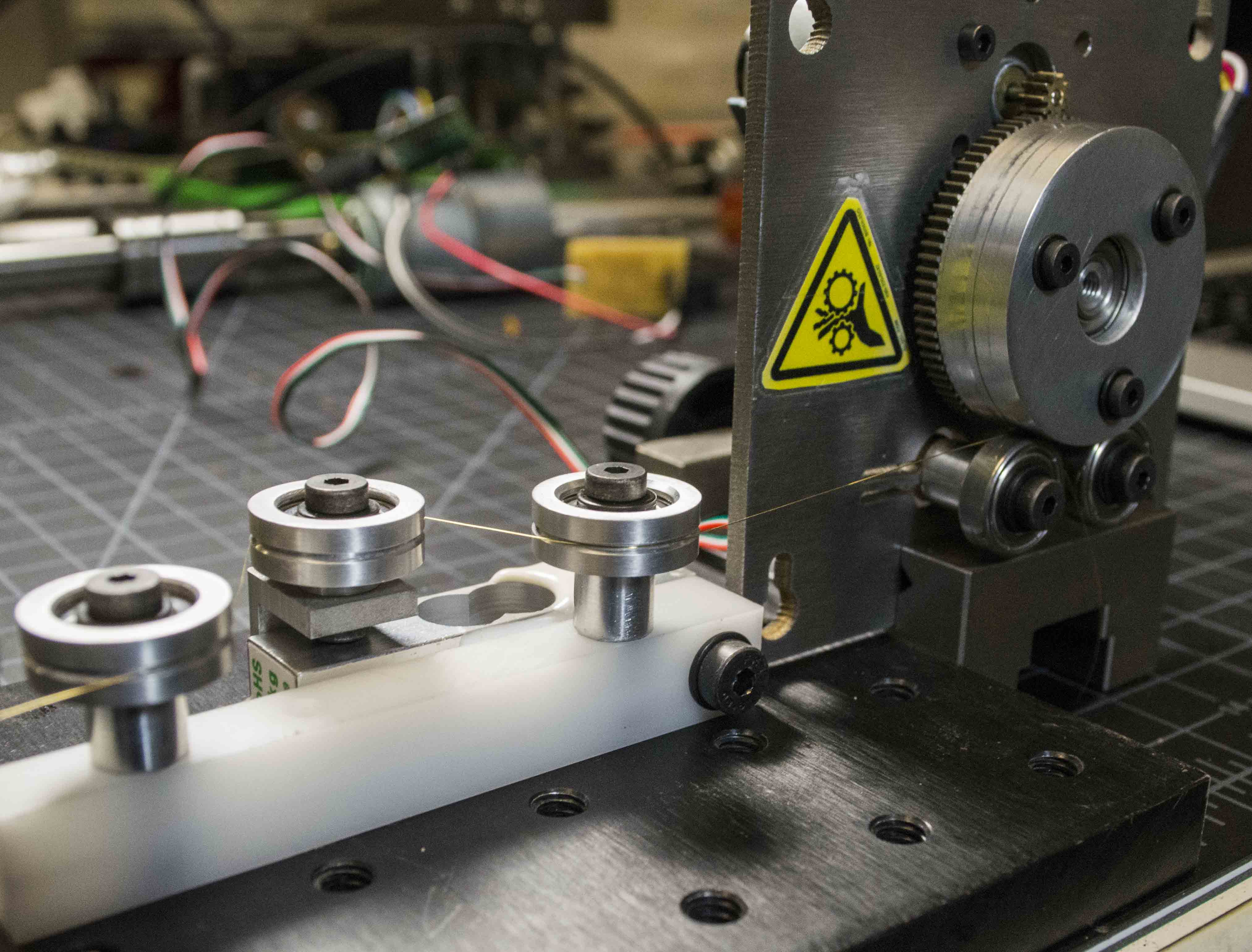
<-- HTMSTMAA
This week I made a wire tension gauge to measure the tension of the wire.

I used a super cheap ($7) load cell which uses a full-bridge of strain gauges to detect the deflection of an aluminum bar (with flexural holes drilled in it). Being composed of two half-bridges (one on top and one on bottom) means that the load cell is only sensitive to shear forces at the proximal end (torsion and side-loads produce no response). Using an oscilloscope and driving the bridge with 5V, I was able to just barely see a 6mV difference across the bridge with applied load. This corresponds to a sensitivity of roughly 1.2mV/V and implies that I need to amplify the signal by approximately 200x in order for a 5V microcontroller to read it.
To do this amplification, I made a classic 3-opamp instrumation amplifier. Since matching resistor values across the circuit is important, commerically packaged instrumentation amplifiers tend to have better performance than in-amps made from discrete components. But, for a weekend project a discrete in-amp will suffice. I used a 50 ohm gain resistor with all other resistors being 10K ohm. This equates to a 400x gain which puts the amplitude of the signal right at 5V.

I used the Instron the calibrate the load cell. I mounted the load cell in the jaws and pushed on it. The results show that the load cell is very linear (within the 50N operating regime).


To interface the strain gauge with the wire, I made my own v-groove pulleys and standoffs.
I ran some experiments and found that the wire breaks at approximately 15N.